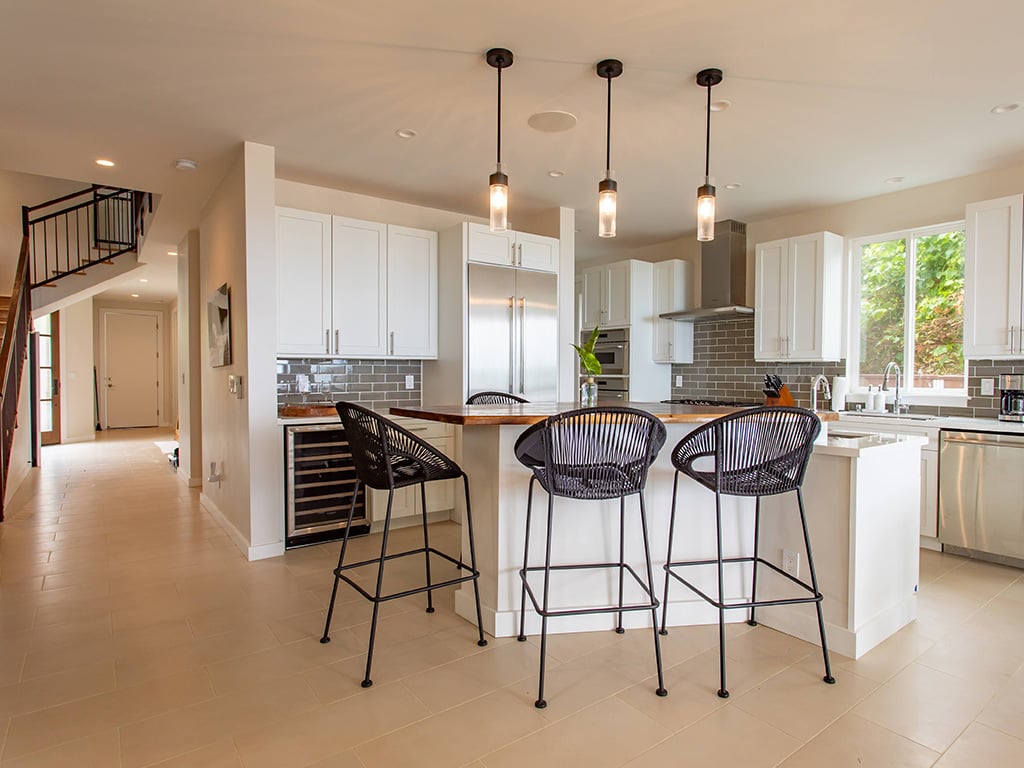Making an Entrance
Top Architects Share Entryway Design Tips
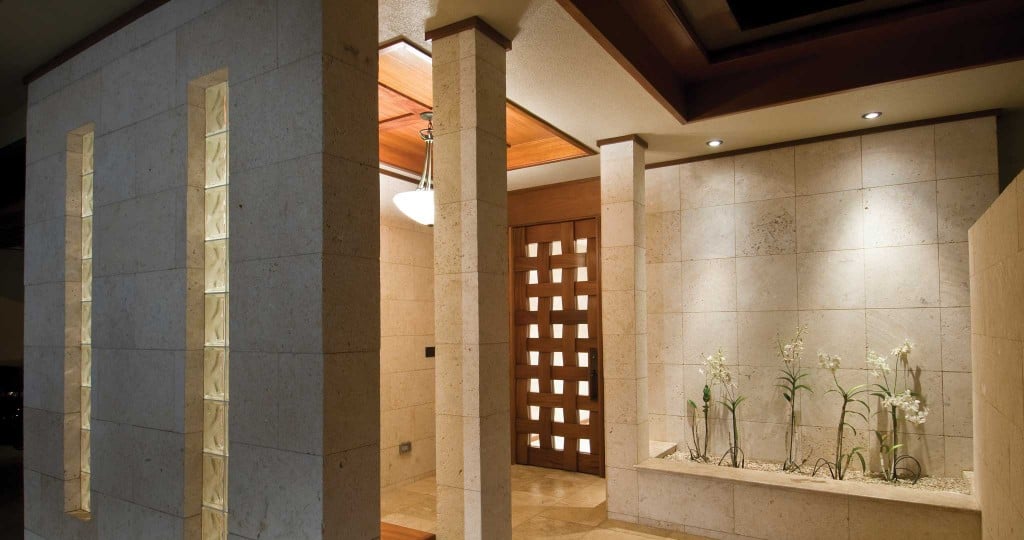
Hawaii Home + Remodeling: How is the entry important to the overall design of a home?
Geoffrey Lewis, Geoffrey Lewis Architect Inc.: When we talk about entry processions, we are really describing the experience for our guests. Homeowners typically enter the home from the garage or a more convenient back door to the kitchen. When we visit a residence as a guest, we are not teleported to the front door or foyer, we enter the property from a public right of way. The experience from the street can be an incredibly wonderful and eventful journey or it can be a boring straight line with nothing but the front door ahead of you. Look at this as an opportunity for your guest to leave the busy world behind and begin a Zen-like journey to the front door. Meandering paths, places of pause such as a water feature, an intimate viewing garden, a grand tree that one walks below; all are great attributes for a successful entry procession.
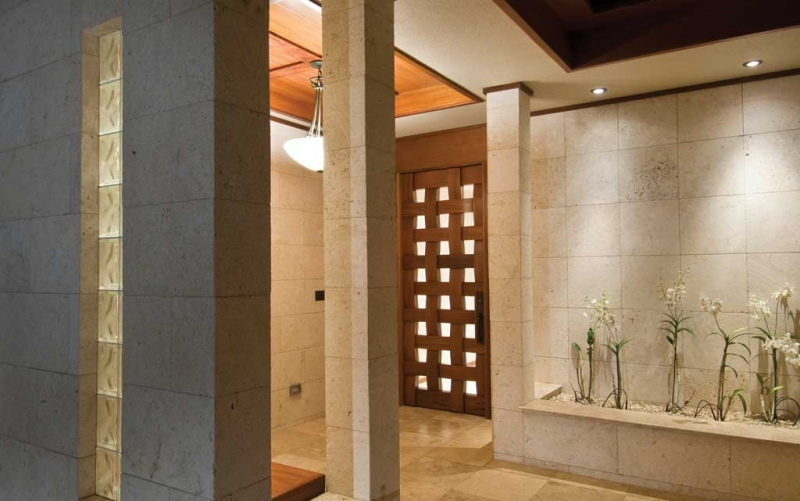
John Black, Lapsis Design Partners: An entry defines how a home is approached and then how someone is directed after entering the home. I see the transition from exterior public space to private interior space as a wonderful opportunity to enhance the experience of living in a home.
HHR: Is the importance of an entryway different in Hawaii than on the Mainland?
GL: Definitely not! The importance of the entry procession is universal. This procession is a snapshot into the culture, the indigenous local fauna and, most important, the owner of the home. This is a great opportunity for homeowners to create a look that matches who they are.
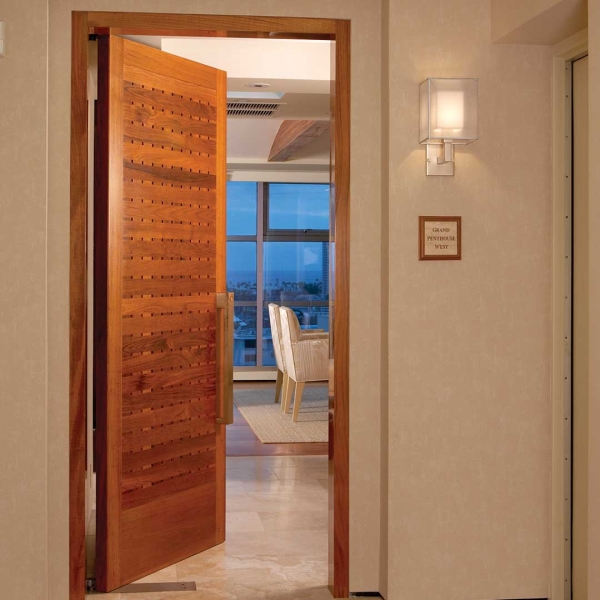
JB: The function of an entry is very dependent on local weather and customs. For many years, I practiced architecture in Boston. The East Coast entries always required a coat closet large enough for bulky winter clothing. Also, the flooring needed to stand up to the mud and snow that gets tracked into the home. In Hawaii, coats are seldom required but we do have the tradition of removing shoes before entering the home. Thus, a shoe closet along with a place to sit down are necessary to avoid a pile of shoes scattered around a front entry.
HHR: Why do people often overlook this step when considering the design of their home?
JB: The entry is not one of the sexy areas of the house. It’s very easy to focus on the kitchen or family room, where most of our time is spent. There are magazines dedicated to kitchens and bathrooms, but who would be interested in a magazine about entries?
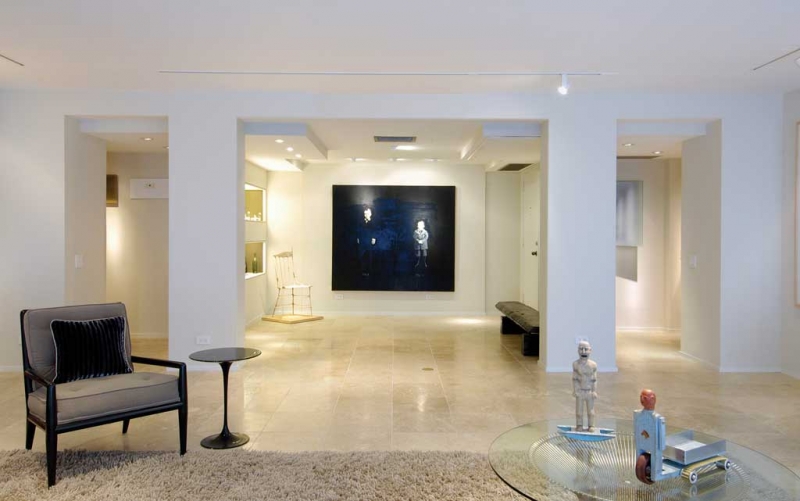
HHR: What makes a good entry procession?
JB: An entry procession begins at the street. It’s the first opportunity to show off or reveal interesting aspects of the home. Realtors® talk about the importance of curb appeal, and business coaches talk about the importance of first impressions. The entry should be inviting, yet offer some privacy from the street.
HHR: What steps do you take when designing a proper entryway?
GL: Typically, the house location comes first, since there are so many important factors to getting this right, including the entry procession. Once the structure is roughly located and the entry point is decided, then determine where the best location is for the transition from the public street to the private property. Things to think about: How do your guests approach the property? Then choose a location that is visible with this approach. Then it’s a matter of connecting this threshold point to the entry of the house in a not-so-straight line. For design purposes, determine the interests of the client and then design a procession that is exciting, mysterious, gives pause and clearly gets you to the front door. The entry itself is very important. Scale is critical. In Kahala, there are many bad examples of entries that are way out of scale. They become a perceived symbol of wealth versus an effective entry of proper scale. Imagine standing at the front entry of one of these houses and being totally exposed, wondering where the surveillance camera is and feeling the need to get out of there as soon as possible. Keep it modest in scale, ideally covered from the elements and somewhat intimate in feel.
JB: If it’s a new home, the first step is to look at the approach to the site, views from the site and sun angles. These design criteria will go a long way in determining the general placement of the entry. The next step is to develop the size and shape of the entry based on how it engages with the interior floor plan, which will be determined by where someone enters the living space.
3 Quick Entryway Tips
PICTURE THIS
Collect images and ideas of entry processions that are appealing. Walk around your neighborhood and see what others have done successfully. “These collected ideas might include gateways, pathways, landscaping, water features or whatever else is of interest to you,” says Geoffrey Lewis of Geoffery Lewis Architect Inc. “Make sure these examples are somewhat similar in scale to what you have in reality.”
GO PRO
Consider hiring an architect or landscape architect to assist in the execution of your entry procession. Remember, the experience happens as soon as one enters your property.
BE CLEAR
The entryway design starts with how your house and property present themselves to guests as they drive up. “Is the entry gate or path visible while approaching?” Lewis says. “Are your guests hunting or circling back or unsure of where to enter? Once on the property, one should clearly know where the entry destination is, and then enjoy the procession to the entry.”
SIZE DOESN’T MATTER
“The entry can be a small space, so how can it be made to feel more gracious?” asks John Black of Lapsis Design Partners. “Maybe there are openings in a wall, or a decorative screen that provides glimpses inside. Maybe there is a ceiling cove with LED lighting to create the sense of a taller space.”




